Introduction
Bangladesh was born in 1971 premised on a secular and democratic ethos as paragraph 2 of the preamble of the first constitution of Bangladesh which was adopted on November 4, 1972 accepted ‘nationalism’, ‘socialism’, ‘democracy’ and secularism as state principles. But “soon after its birth, the political history and politics of Bangladesh found itself within the twists and turns of majoritarian politics (Mohisin, 2009)”. Through the Eighth Amendment to the constitution on 7 June 1988, Islam was declared as the state religion of Bangladesh (Article 2 Clause A) with the provision that other religions may be practiced in peace and harmony. “The above changes were brought about by successive political regimes to consolidate their power base by appealing to the sentiments of the majority. This not only transformed the political identity of the state but also created internal polarization (Mohisin, 2009)”. Since then the minority community (largely Hindus) face discrimination and continuous atrocities and violence as reported by many scholars and world bodies. It is also documented that the political process and the political parties were a major source of discrimination against minorities.

Rights Bangladesh, 2000, Dhaka, Ain ‘O Salish Kendro, 2001, pp. 160. and Banladesh Bureau of Statistics (BBS) Literacy Assessment Survey 2011, May 2013, Stastistics and Informatics Division (SID) Ministry of Planning.
Ever since the birth of Bangladesh, the Hindu population grew only marginally and their relative share in the total population declined considerably. According to the 2001 census, the size of Hindu population was 11.6 million which means since the past 27 years only, 1.7 million population was added yielding a 0.6% annual average growth rate. By contrast, the Muslim population almost doubled from 61 million to 111 million and the annual average growth rate was 2.2% during the same period. Therefore, the share of Hindu population to the country’s total population declined from 13.5% to 9.2% during the same period and by 1.79% since 1991, whilst the relative composition of Christians and Buddhist population did not change. Further, the Hindu population declined to 8.2 percent in the country with annual growth rate coming down to 0.05 percent between 2001 to 2011 and it is projected that in 2051 the share of Hindu population will decline to 3.7 percent.
History of Violence against Hindus:
A history of bloodshed against Hindus prevailed even before independence of India and the violence against Hindus was a common phenomenon in the then East Bengal and today’s Bangladesh because Hindus were historically religious minority but at the time of Independence due to partition of the country, genocide against Hindus on the basis of religion was exemplary. Since 1947 the violence against Hindus in then Pakistan and now Bangladesh is a continuous phenomenon and followed religiously by the majority of Muslims irrespective of political parties. The innumerable incidence of atrocities against Hindus like killing, rape, slaughter, forcible annexation of properties, burning of houses and abduction are taking place and in considerable number of cases the violators are the cadres of various political parties irrespective of whether they are ruling or are in opposition. According to an estimation, 475 persons belonging to the minority community are migrating from Bangladesh daily (Azad, Executive Director, Amity for Peace, Bangladesh).
After the 1947 genocide, Hindus were persecuted the most in 1971 due to which large scale migration of Hindus to India took place. According to estimates, at the time of Bangladesh Liberation War, almost 3,000,000 Hindus were butchered in one of the biggest genocides of the century. An article in ‘Time’ magazine dated 2 August 1971, stated "The Hindus, who account for three-fourths of the refugees and a majority of the dead, have borne the brunt of the Muslim military hatred (Wiki, 2014). According to BBC (9 March 2013) “Official estimates say more than three million were killed and tens of thousands of women raped during the Bangladesh war of independence. The minority Hindu community suffered disproportionately because some Pakistanis blamed them for Bangladesh's secession”. “Hindu community leaders say the attacks are systematic and have been going on for years. They say they are not only carried out by hardliner Islamists but also by supporters of other mainstream political parties, including the Awami League and the main opposition Bangladesh Nationalist Party (BBC, 9 March, 2013). The aim of the violence, Hindu leaders allege, is to grab land and other property. As a result, they say, many Hindus are fleeing to India to escape harassment, intimidation and violence (BBC, 9 March, 2013).
Many Bangladeshi scholars like Salam Azad (Executive Director, Amity for Peace, Bangladesh) hold the view that Islam became the state religion in Bangladesh since 1982, a concept diametrically opposed to the slogans and principles on the basis of which the Bangladesh freedom movement started i.e. secularism and democracy. Consequently, the minorities particularly Hindus, have been marginalized to the extent that they became unwanted low grade citizens in their own country. In almost all of the cases, the Hindus are not getting justice from judiciary. While depicting the plight of Hindus and exemplifying the nature of injustice, Azad says “the writ petitions made by ASK, an NGO to safeguard minority rights had not been responded to. Democracy without secularism has been negatively acting over freedom of the minority communities. Some NGOs stood as shelter for the minorities but that too has been obstructed by creating grouping among NGOs. Rights of the citizens belonging to the minority communities are thus curtailed in manifold ways”.
Violence in recent years
“We left our house in 1971 as the Pakistan army and Razakars set fire to our village. And we are passing through the same ordeal in 2014,” lamented Bishwajit Sarkar of Malopara village in Abhaynagar, Jessore (The Daily Star, January 2, 2014). Soon after the voting ended in Bangladesh, the Hindus had to face the ire of the activist of Bangladesh Nationalist Party and Jamaat-Shibir. Hindu houses have been looted, vandalized and burned in several places like Thakurgaon, Dinajpur, Rangpur, Bogra, Lalmonirhat, Rajshahi, Chittagong and Jessore (The Daily Star, January 7 2014). According to the New Age, “Miscreants attacked Hindu localities, temples and business establishments in Jessore, Satkhira, Thakurgaon, Panchagarh, Chittagong, Nilphamari, Kurigram, Lalmonirhat, Gaibandha, Dinajpur, Netrakona and some other districts after the national elections (New Age, January 11, 2014)”.
According to Dhaka Tribune, the violence against Hindus in these areas erupted due to the refusal by Hindus to boycott the election imposed by Jamaat-Shibir activists of Prembag, Chanpadanga, Bahirghat, Beledanga and some adjacent areas. The mayhem continued for two-hour by exploding 250 bombs, vandalization of one hundred houses etc. “The Jamaat-Shibir men resorted to their newly adopted technique of inciting their followers by lies. Around 4 pm, they made phone calls to their activists and students of the local madrasa, telling them that five of their activists had been killed in a clash with Malopara villagers. Jamaat-Shibir activists poured in from nearby villages – Baliadanga, Jagannathpur, Deyapara, Joldanga, Basundia, Dhakuria and Bangram – and attacked Malopara (Dhaka Tribune, january 7, 2014)”.
According to reports, almost five hundred Hindu families of Gopalpur village were affected in these classes and became homeless. Besides this, at least 350 houses and 50 shops of five villages, including Pritampara, Sahapara, Profullahpara, Telipara, Madhabpara and Ajaypara of Kornai village were damaged, set ablaze and looted (The Daily Star, January 7, 2014). The Hindus were also attacked and looted in the strongholds of Jamaat-Shibir and Jamaat-BNP like Satkania, Loahagara and Banshkhali upazilas Kaunia upazila of Rangpur and Nandigram upazila in Bogra (The Daily Star, January 7 2014). According to Dhaka Tribune (January 7, 2014) “Even homestead trees – coconut and banana – were burnt or chopped down and cowsheds were burnt, too. Idols in the houses were vandalised. Everything else was looted”.
On 29 January 2014, 20 Hindu families of Satkhira district got threat letters to leave Bangladesh where it has been written that “time has come to leave your homes immediately, and this time you have been told nicely. But the next time there will not be any niceities. (Dhaka Tribune Correspondent, January 29, 2014; Satkhira Correspondent, January 29, 2014 published in Hindu Existence, January 29, 2014)”. According to BD News 24.com (January 10, 2014), two Hindu housewives were sexually abused in Manirampur Upazila in Jessore in the post-election violence against the minority community. They held the men hostage and sexually abused the two housewives. The sexual abuse and rape against Hindu women is also reported by International Business Times (February 19, 2014).
A large number of Hindu temples are also burnt, vandalized and looted frequently. According to reports, the Kali temple at Narayanpur village under Ramganj in Lakshmipur, Satdoha Langta Babar Ashram and Shri Radha-Gobinda Mandir were either looted or torched (New Age, January 11, 2014; The Hindu, January 8, 2014). Besides these, the Kali temple at Battola and Kachubunia and the Durga temple of Ikri Union have also been attacked. The daily Ittefaq reported that “The members of the Hindu community are living in stark fear. Two people were killed in Gaibandha and Joypurhat (January 9, 2014)”. But according to International Business Times (February 19, 2014), “At least two dozen people were killed” in the violence. According to Ittefaq, The Hindu houses were set on fire in the Boalia village of Sukash union, Kushumba union of Joypurhat, Kuptola union of Gaibandha Lalmonirhat and Senpara of Shafinagar, Satkania, Loahagara and Banshkhali upazilas and many of the Hindus are injured due to the violence against them.
After this wide spread violence against Hindus after the general election, the violence is continuing and in a recent incidenr on May 5 2014, a mob of nearly 3,000 attacked Hindu households and a temple in eastern Bangladesh after two youths from the community allegedly insulted the Prophet Muhammad on Facebook at Homna in Comilla district, about 100 km south east of Dhaka (Hindu Existence, May 7, 2014). According to the Editor of Hindu Existence, “Minority Hindus are attacked again and again in Bangladesh on false rumors of defaming Muhammad in facebook. In most of the cases, it is established that some Muslim perpetrators like to use the social media like facebook to upload objectionable comments and pictures against Islam and Muhammad in a very motivated way. After spreading the rumors of blasphemy or the defamation of Muhammad, the Islamic goons attack Hindus, Hindu-households, temples and specially the women folk”. Most of the news papers reported that almost all the violence and attacks on Hindus in 2014 were initiated by the activists or members of Jamat-e-Islami and its student wing and Bangladesh National Party.
The year 2013 also witnessed a large scale and widespread violence against Hindus in Bangladesh. All forms of violence triggered against minority Hindus on 28 February 2013, on behalf of Jamaat-e-Islami and its student wing Islami Chhatra Shibir soon after the death sentence given to Hossain Sayeedi, the Vice President of the Jamaat-e-Islami and the International Crime Tribune and the government of Bangladesh held Jamaat-e-Islami for the violence (Wiki, 2013). “In some cases allegedly aided by Bangladesh National Pary supporters, struck terror in the hearts of Hindus (News Bharati, Marrch 03, 2013)”. According to news Bharati, almost all the victims alleged that BNP activists are directly involved in the attack. “Sayedee got death sentence because of you. You cannot stay in this country,” Bablu Bhuiyan, whose two houses were damaged, quoted one attacker as saying (News Bharati, March 03, 2013). Barisal, Bagerhat and Gazipur, Rajganj, Chittagong's Banshkhali, Bagerhat, Gaurnadi upazila in Barisal, Kashimpur Bazar in Gazipur, Belka, Dhupni and Bangsher bazaar, Sundarganj upazila, Morelganj upazila are the areas where the most violent attacks took place. Expressing concern over the violence, the US Ambassador to Bangladesh Dan Mozena said “The United States is sad about the loss of lives and property and concerned about the attacks on Hindu temples and homes (The Daily Star, March 12, 2013; clickittefaq, March 11, 2013)”.
The 2013 violence was spread across the country and Hindus of almost all the divisions were affected. Upazilas like Begumganj, Begumganj, Morrelganj, Raipur, Gaurnadi, Morrelganj, Lohajung, Shibganj, Kotalipara, Aditmari, Satkania, Wazirpur, Singra, Daudkandi, Netrokona, Bamna, Burhanuddin, Sirjdikhan, Rangpur Sadar, Fulbaria, Kaliganj, Kotalipara, Juri, Patuakhali, Sherpur, Netrokona, Sreepur, Gatibali and Gazipur were the most affected areas where violence with burning and loot of major temples took place.
Even after these wide spread violence, the attack against Hindus continued for the whole year. On November 3 2013, Bonogram bazaar in Santhia upazila, about 40 kilometres from Pabna sadar, the Hindus were attacked. A Hindu boy was attacked and his house was burned on the false allegation of maligning Prophet Mohammad (The Daily Star, November 3, 2013, atestoneinstitute, November 21, 2013). In another incident, a group of masked criminals attacked 18 shops belonging to members of the Hindu community in a rural area in the district Lalmonirhat. The attack was allegedly launched by the main opposition party, BNP, and its crucial ally, Bangladesh Jammat-e Islami, the largest Islamist political party (atestoneinstitute, November 21, 2013). According to Hindu community leaders, more than 50 Hindu temples and more than 1,500 Hindu homes were destroyed in 20 districts in 2013 alone. The President of the Bangladesh Hindu Buddhist Christian Unity Council said, "Conspirators are out to create a situation so that the Hindus can be attacked." Identifying the situation, Transparency International Bangladesh, a body of the Berlin-based Transparency International says, "Onslaughts and intimidation on minorities for ill and destructive political purpose before the election are not acceptable (atestoneinstitute, November 21, 2013)."
Underlying Cause of Violence
The larger objective of these kinds of violence and attack is to grab the land of Hindus. According to Jyotrimoy Barua, a Supreme Court lawyer in the capital Dhaka, “When we say it’s just political, it legitimizes the violence, Most of the people’s houses they are burning are poor. If you burn their house, they will leave the country, and you get their land.” “The Vested Property Act remained in force until 2001, allowing the government to expropriate “enemy” (in practice, Hindu) lands. Over the course of its existence, the government seized approximately 2.6 million acres of land, affecting almost all Hindus in the country (IRFR, 2012)”. Once the land is acquired, the influential and political people used to grab those lands and most of the Hindu families in Bangladesh is affected by this law. “Many Hindus continued efforts to recover land lost under the act. The Vested Properties Return (Amendment) Bill of 2011 obligates the government to publish lists of returnable vested property through gazette notification within 120 days. Subsequently, Hindu leaders submitted applications to reclaim previously seized vested property and requested an extension to prepare further applications. The Vested Property Return (Second Amendment) Act of 2012, passed on September 18, gives an additional 180 days for interested parties to submit applications for adjudication (IRFR, 2012)” but in practical these return act has not been enforced properly. According to Barkat et al (2008), in most of the cases, the beneficiary of these vested properties are the influential political people of different areas across political parties.
According to Jyotrimoy Barua “The violence isn’t just perpetrated by Jamat-e-Islami. In other provinces, opportunistic leaders have been accused of using divisive communal sentiments to enrich themselves. “In some constituencies, all the parties are tussling from the same group of voters — if anyone loses, he blames the Hindus (Time, January 14, 2014)”
Conclusion:
The violence against Hindus in Bangladesh is a part and result of wider religious intolerance spread against Hindus in the country is not the only cause to be believed. The economic and political aspect of violence in a wider prospect of neighborhood studies is required to understand the phenomena of Hindu subjugation in the country. There is a great possibility of underreporting of actual intensity of the violence and oppression if we critically analyze the political, social and democratic situation prevailing and the status of media in Bangladesh over the last 42 years. Whatever may be the cause of the violence against Hindus in Bangladesh, but it is clear that almost all the political parties of Bangladesh are trying to derive political mileage from the plight of Hindus. Besides, draconian laws like vested property act is a useful instrument to grab Hindu land holdings by the majority Muslim community. In the absence of any major economic opportunities, agricultural land is the only economic resource for which there is a lot of competition to grab and successive governments played an instrumental role in grabbing Hindu land to satisfy the majority influential community. Most of the Hindus hold the view that land is the major reason for which they have been attacked historically. Being one of the influential countries in the South Asian region, India should try to influence Bangladeshi authorities to save the minorities Hindus in Bangladesh. When there is already a world opinion on the issue, India and the Hindus in rest of the world need to intensify their campaign for safeguarding of minority rights in Bangladesh.
References:
- AZAD S., Status Of Minority Communities In Bangladesh; htpp://www2.ohchr.org; http://www.google.co.in/url?sa=t&rct=j&q=&esrc=s&source=web&cd=1&cad=rja&uact=8&ved=0CBsQFjAA&url=http%3A%2F%2Fwww2.ohchr.org%2Fenglish%2Fissues%2Fminorities%2Fdocs%2Famity%2520for%2520peace.doc&ei=50K5U33Gs6WkwXc44DoCA&usg=AFQjCNEcJugvOPbytoGNd5swFWIUiPijA&bvm=bv.70138588,d.dGI.
- Bangladesh Pratidin (January 10, 2013); কাপাসিয়ায় হিন্দু বাড়িতে আগুন; http://www.bd-pratidin.com/2014/01/10/37152.
- Barkat A., S. u. Zaman, M. S. Khan, A. Poddar, S. Hoque and M. T. Uddin (2008); Deprivition of Hindu Minority in Bangladesh: Living with Vested Property; Pathak Samabesh Book; Dhaka Bangladesh.
- BBC (March 9, 2013); Bangladesh Minorities 'Terrorised' After Mob Violence; http://www.bbc.com/news /world-asia-21712655
- BD News (January 10, 2014); 2 Hindu Housewives Violated; http://bdnews24.com/bangladesh/2014/01/10/2-hindu-housewives-violated.
- Dhaka Tribune (january 7, 2014); Obhoynagar Reminds of ’71 Horrors; http://www.dhakatribune.com/crime/2014/jan/07/obhoynagar-reminds-%E2%80%9971-horrors.
- Habib M. (November 21, 2013); Minority Hindus Targeted in Bangladesh; Gatestone Institute; http://www.gatestoneinstitute.org/4058/hindus-bangladesh.
- Hindu Existence (January 29, 2014); Islamic Bangladesh has lost all its Humanity. Now trying eviction of minority Hindus by threatening letters; http://hinduexistence.org/category/bangladeshi-hindus/.
- Hindu Existence (May 7, 2014 ); Hindus again attacked in Bangladesh on false rumours of defaming Muhammad in facebook; http://hinduexistence.org/category/attack-upon-hindu-buddhists-by-muslims/.
- HinduExistance (December 20, 2013); Who will save Bangladesh Hindus? Awami League and BCL are involved in Biswajit killing. Court sentenced 8 to death, 13 for life; http://hinduexistence.org/category/bangladeshi-hindus/.
- Hinduexistance (January 10, 2014); Boycott anti Hindu ABP Groups for their Nefarious Design to Snatching the Symbol of ‘Sindoor’ from Hindu Woman.; http://hinduexistence.org/category/bangladeshi-hindus/.
- International Business Times (July 06, 2014); Banglastan: Do Hindus Have A Future In Bangladesh?; http://www.ibtimes.com/banglastan-do-hindus-have-future-bangladesh-1556463.
- International Religious Freedom Report for 2012 (2012) United States Department of State • Bureau of Democracy, Human Rights and Labor; pp 3-4.
- Mohsin A. (2009); Religion – A tool for discrimination in South Asia?, Bangladesh, (1st Chapter), South Asians for Human Rights (SAHR), Colombo 8, Sri Lanka.
- My Telegraph (December 27th, 2012); Minorities are no Longer Safe under Awami League’s Rule; http://my.telegraph.co.uk/nivritchari/nivritchari/31/minorities-are-no-longer-safer-under-awami-leagues-rule/.
- NDTV (January 10, 2014); Widespread attacks on Hindus in Bangladesh on Polling Day; http://www.ndtv.com/article/world/widespread-attacks-on-hindus-in-bangladesh-on-polling-day-469571.
- New Age (January 11, 2014); Attacks on Minorities; http://www.newagebd.com/detail.php?date=2014-0111&nid=80020#.U7PpTbHAAUB.
- News Bharati (December 12, 2013); Hindus, Facing Existential Attacks in Bangladesh http://www.interfaithstrength.com/Existential.htm.
- News Varati (March 3, 2013); Hindus Under Attack in Bangladesh; http://en.newsbharati.com/Encyc/2013/3/3/Hindus-under-attack-in-Bangladesh.aspx
- The Daily Ittefaq (January 9, 2014); Attacks on Minorities Continue; http://www.clickittefaq.com/more-stories/attacks-minorities-continue/.
- The Daily Ittefaq (March 11, 2013); Mozena: Violence Is Not the Way to Resolution; http://www.clickittefaq.com/featured-area/mozena-violence-is-not-the-way-to-resolution/.
- The Daily Star (January, 7, 2014); Hindus under Threat; http://www.thedailystar.net/hindus-under-threat-5781.
- The Daily Star (January 06, 2014); Terror on Hindus; http://www.thedailystar.net/terror-on-hindus-5670.
- The Daily Star (January 10, 2014); Gonojagoron Mancha Starts Road March to Jessore Today; http://www.thedailystar.net/city/gonojagoron-mancha-starts-road-march-to-jessore-today-6221.
- The Daily Star (March 12, 2013); US Worried at Violence; http://archive.thedailystar.net/beta2/news/us-worried-at-violence/.
- The Daily Star (November 3, 2013); Hindus Attacked in Pabana; http://archive.thedailystar.net/beta2/news/hindus-attacked-in-pabna/.
- The Hindu (January 8, 2014); Hindu Temple in Bangladesh Vandalized; http://www.thehindu.com/news/international/south-asia/hindu-temple-in-bangladesh-vandalised/article5553487.ece
- Time (Jan. 14, 2014); The Hindus of Bangladesh Fear for Their Future; http://world.time.com/2014/01/14/the-hindus-of-bangladesh-are-fearing-for-their-future/.
- Wiki (2014); 2013 Bangladesh Anti-Hindu Violence; http://en.wikipedia.org/wiki/2013_Bangladesh_anti-Hindu_violence.
- Wiki (2014); 2014); Bangladesh Anti-Hindu Violence; http://en.wikipedia.org/wiki/2014_Bangladesh_anti-Hindu_violence.
- Wiki (2014); Hinduism in Bangladesh; http://en.wikipedia.org/wiki/Category:Hinduism_in_Bangladesh.
(Dr Prakasha Chandra Sahoo is an independent research scholar based in Delhi while Dr Atanu Mohapatra is Assistant Professor at the Dept of Extension & Communication, The M S University of Baroda, Gujarat)
Courtesy: Vivek: Issues and Options; May-June 2014, Image source: http://hinduexistence.files.wordpress.com

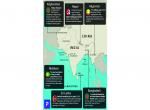
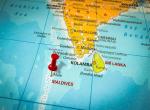

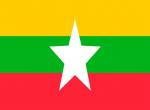
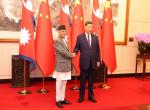
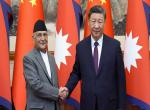
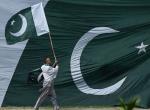
Post new comment